The spider plant (Chlorophytum comosum) is one of the most popular indoor plants, loved for its lush green foliage, easy maintenance, and natural air-purifying properties. Known for its adaptability and resilience, it’s perfect for both beginner and experienced plant enthusiasts. In this comprehensive guide, we’ll cover how to grow spider plants indoors, explore the different types available, and share tips for keeping them healthy and vibrant. Let’s dive in and discover why spider plants make a fantastic addition to any indoor space.
Why Choose a Spider Plant for Indoor Gardening?
Spider plants are an excellent choice for indoor gardens for several reasons:
- Low Maintenance: Spider plants are forgiving and thrive in a variety of indoor environments.
- Air Purifying: NASA research has highlighted spider plants’ ability to purify indoor air, making them beneficial for home environments.
- Non-Toxic: Safe for homes with pets and children, as they are non-toxic when ingested.
- Aesthetic Appeal: With their arching, green, and white-striped leaves, spider plants add a touch of natural beauty to any room.
Types of Spider Plants
Several varieties of spider plants offer unique colors and leaf patterns. Here are some popular types:
- Variegated Spider Plant (Chlorophytum comosum ‘Vittatum’)
This is the classic spider plant, easily recognized by its green leaves with a broad, central white stripe. It’s one of the most common varieties found in homes. - Reverse Variegated Spider Plant (Chlorophytum comosum ‘Variegatum’)
Similar to the variegated spider plant, but with the stripe on the outer edges rather than the center. This plant adds visual interest with its unique coloration. - Bonnie Spider Plant (Chlorophytum comosum ‘Bonnie’)
Known for its curly, compact leaves, the Bonnie spider plant is a unique variety with a more bushy and compact appearance. The leaves have a twisty growth pattern and feature the same variegated stripe. - Green Spider Plant (Chlorophytum comosum)
This variety has uniform green leaves without any variegation. It’s simpler in appearance but equally resilient and easy to care for. - Hawaiian Spider Plant (Chlorophytum viridescens)
Also known as the Golden Glow, this plant has smaller, thicker leaves with a yellowish-green tint and tends to be more compact.
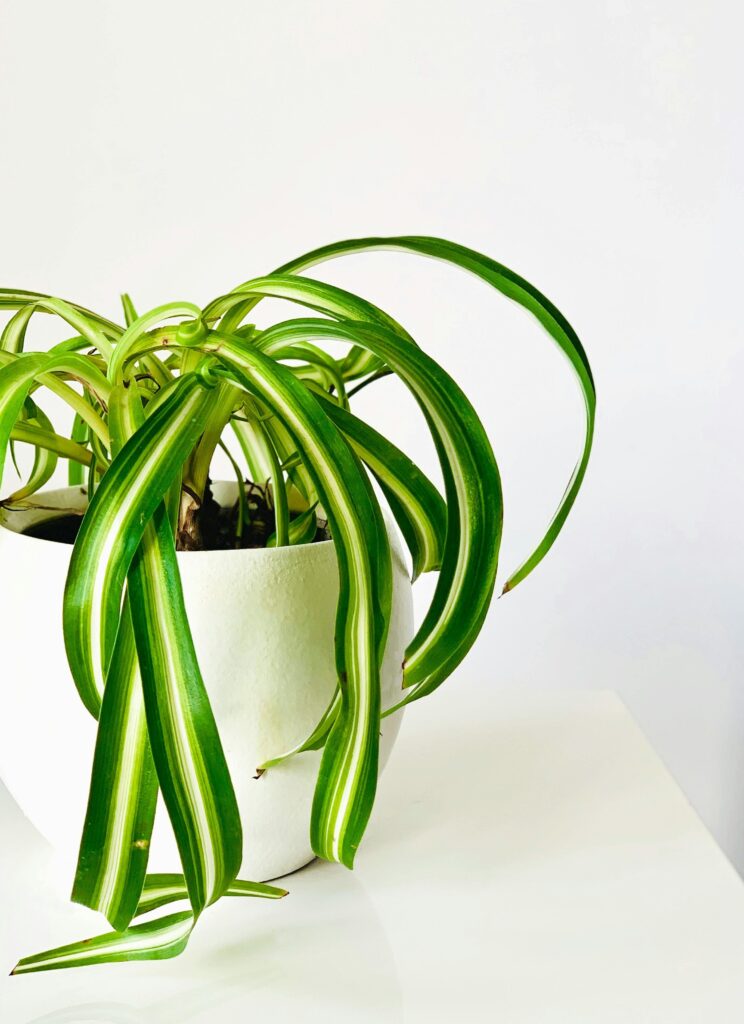
Growing Spider Plants Indoors: A Step-by-Step Guide
Growing a spider plant indoors is easy if you provide the right conditions. Follow these steps for a thriving spider plant:
1. Choosing the Right Pot and Soil
- Pot: Choose a pot with drainage holes to prevent root rot. Spider plants do well in both hanging baskets and regular pots.
- Soil: Use a well-draining potting mix, ideally one designed for indoor plants. A mix containing perlite or vermiculite helps with aeration and drainage, which spider plants love.
2. Light Requirements
Spider plants are adaptable when it comes to light, but they have a few preferences:
- Bright, Indirect Light: They grow best in bright, indirect light, making them ideal for rooms with filtered sunlight or windows with curtains.
- Low Light Tolerance: Spider plants can tolerate low-light conditions, but their growth may slow, and variegated types may lose some of their white coloring.
- Avoid Direct Sunlight: Direct sunlight can scorch the leaves, leading to browning tips or faded colors.
3. Watering Needs
Spider plants are sensitive to overwatering, so be careful with your watering schedule:
- Frequency: Water thoroughly, allowing the top inch of soil to dry out between waterings. Generally, water once a week, adjusting based on the season and room temperature.
- Avoid Fluoride and Chlorine: These chemicals can cause brown leaf tips. Use filtered water or let tap water sit for 24 hours to allow these substances to dissipate.
- Humidity: Spider plants prefer moderate humidity. They do well in most indoor environments but benefit from a light misting during dry winter months.
4. Fertilizing Spider Plants
Spider plants don’t require heavy fertilizing but will benefit from some nutrients:
- Frequency: Feed your spider plant with a balanced, water-soluble fertilizer once a month during the growing season (spring and summer).
- Amount: Use half the recommended strength on the fertilizer packaging, as spider plants are sensitive to salt buildup, which can harm their roots.
5. Repotting Spider Plants
Spider plants tend to grow quickly and can become root-bound, so repot them every 1-2 years:
- When to Repot: If you notice roots emerging from the drainage holes or the plant’s growth slowing, it’s time to repot.
- Pot Size: Move the plant to a pot that’s only slightly larger (about 1-2 inches wider) to avoid excess soil that can lead to water retention and root rot.
- Soil Refresh: Use fresh potting soil, and gently loosen the plant’s root ball before replanting.
Common Problems and How to Solve Them
Like all plants, spider plants can face occasional issues. Here’s how to keep your plant thriving:
- Brown Tips: Commonly caused by over-fertilizing, underwatering, or fluoride in water. Use filtered water, reduce fertilizing, and check your watering schedule.
- Pests: Spider plants are generally pest-resistant but may occasionally attract aphids, spider mites, or mealybugs. Remove pests by wiping leaves with a mild soap solution and rinse them off.
- Root Rot: Overwatering can cause root rot. Make sure there’s good drainage and allow the soil to dry out between waterings.

Spider Plant Propagation
One great thing about spider plants is how simple they are to propagate. Spider plants produce “spiderettes,” or baby plants, which can be used to grow new plants.
- Identify a Spiderette: Look for small offshoots with miniature versions of the main plant growing from the parent. These are usually visible along stems.
- Separating the Spiderette: Wait until the spiderette has a few small roots, then gently cut it from the main plant using clean scissors.
- Planting: Place the spiderette in a small pot with fresh potting soil and water lightly. You can also root the spiderette in water for a few days before potting it in soil.
- Care for the New Plant: Place the new plant in bright, indirect light and water regularly, allowing the soil to dry slightly between waterings.
Benefits of Growing Spider Plants Indoors
Spider plants offer several benefits beyond their beauty and low-maintenance nature:
- Air Purification: Spider plants absorb toxins like formaldehyde, xylene, and carbon monoxide, improving indoor air quality. This makes them an excellent choice for bedrooms, living rooms, and offices.
- Mood Booster: Studies suggest that indoor plants like spider plants can enhance mood, reduce stress, and improve focus and productivity.
- Pet-Friendly: Unlike many indoor plants, spider plants are safe for pets, making them a great addition to homes with cats and dogs.
Creative Ways to Display Spider Plants Indoors
Spider plants are incredibly versatile when it comes to indoor decor. Here are a few ways to display them:
- Hanging Baskets: Perfect for showcasing the plant’s cascading foliage and spiderettes.
- Wall Mounts: Add a modern touch by using wall-mounted planters to display your spider plant.
- Shelving Displays: Place them on open shelves to add greenery and fill empty spaces.
- Plant Stands: Elevate spider plants using a stand to draw attention to their vibrant leaves and arching shape.
FAQs
What are spider plants good for?
Spider plants are natural air cleaners, removing toxins and enhancing indoor air quality. They increase humidity levels, making them excellent for dry spaces, and are safe for pets, making them a stress-free addition to any home.
Where is the best place to keep a spider plant?
Position your spider plant in a spot with indirect sunlight, such as near an east-facing window or in a well-lit room. Hanging it in a basket or placing it on a raised shelf allows the elegant foliage to cascade beautifully.
Does a spider plant need sunlight?
Spider plants thrive in bright, filtered light. They don’t need direct sunlight and can adapt to low-light areas, but too much direct exposure can burn their delicate leaves.
Should I cut the babies off my spider plant?
If you want to propagate new plants or reduce crowding, trim the spiderettes and plant them in soil or water. However, leaving them attached adds a lush, cascading effect to your plant’s look.
What are the disadvantages of spider plants?
Spider plants may develop brown leaf tips due to fluoride in tap water or inconsistent watering. They also grow quickly, often needing repotting, and in rare cases, their pollen may bother those with sensitivities.
How do you make a spider plant happy?
Provide bright, indirect light, water only when the topsoil feels dry, and use well-draining soil. Mist the leaves if your home is dry, and feed it monthly during spring and summer with a balanced plant fertilizer.

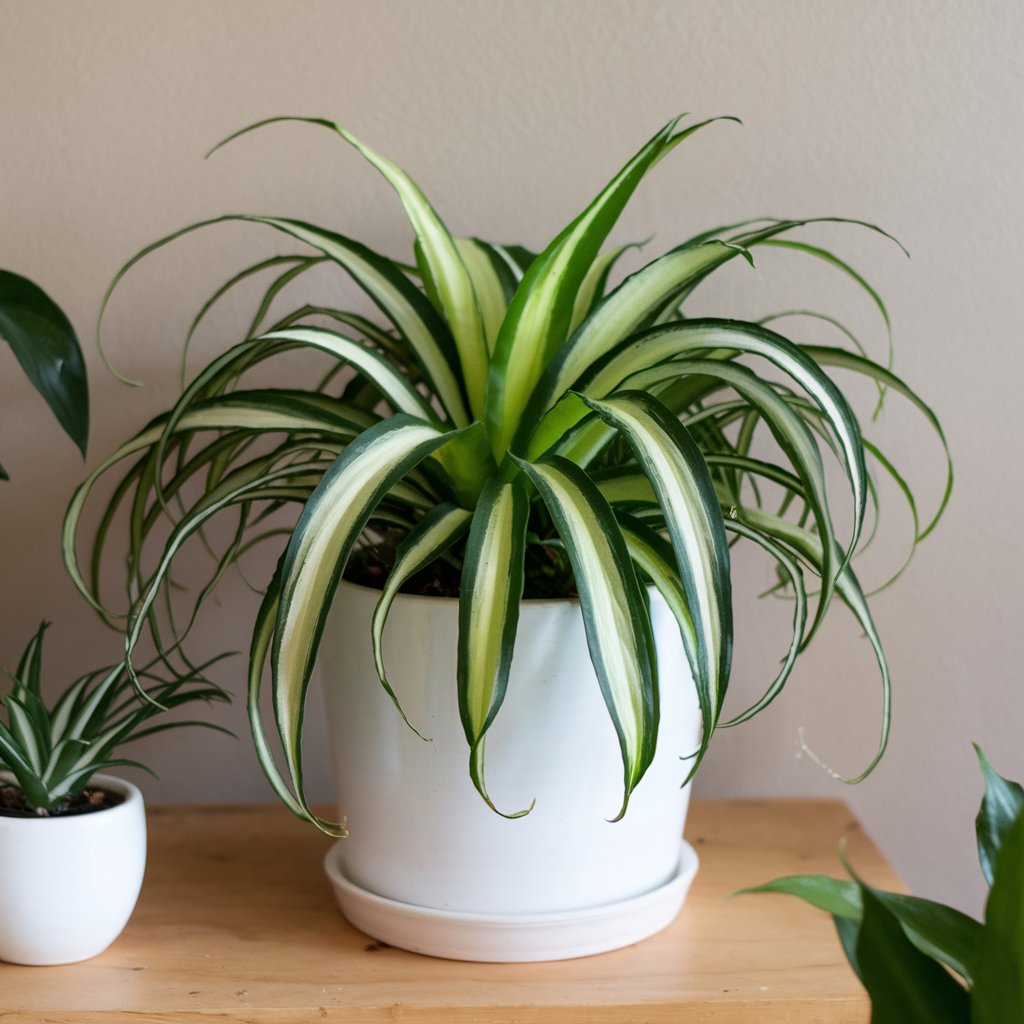
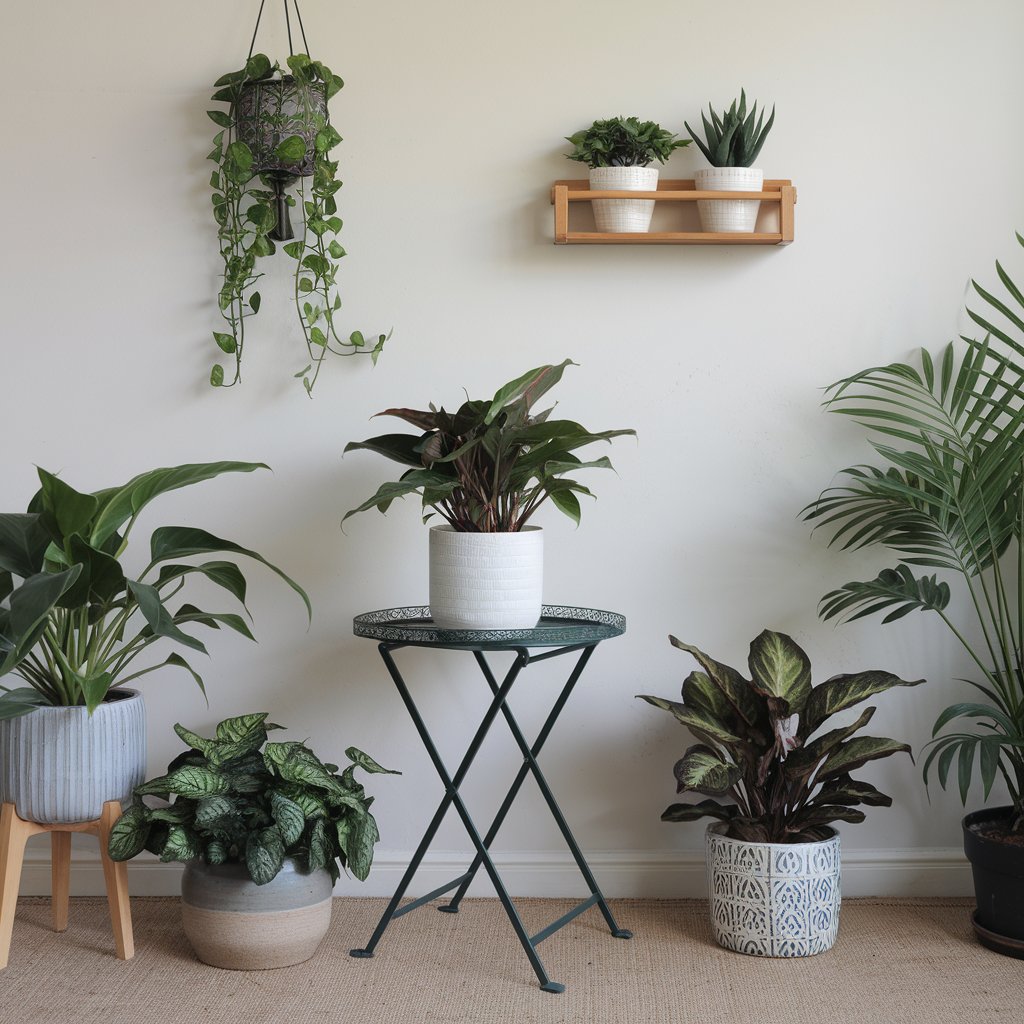
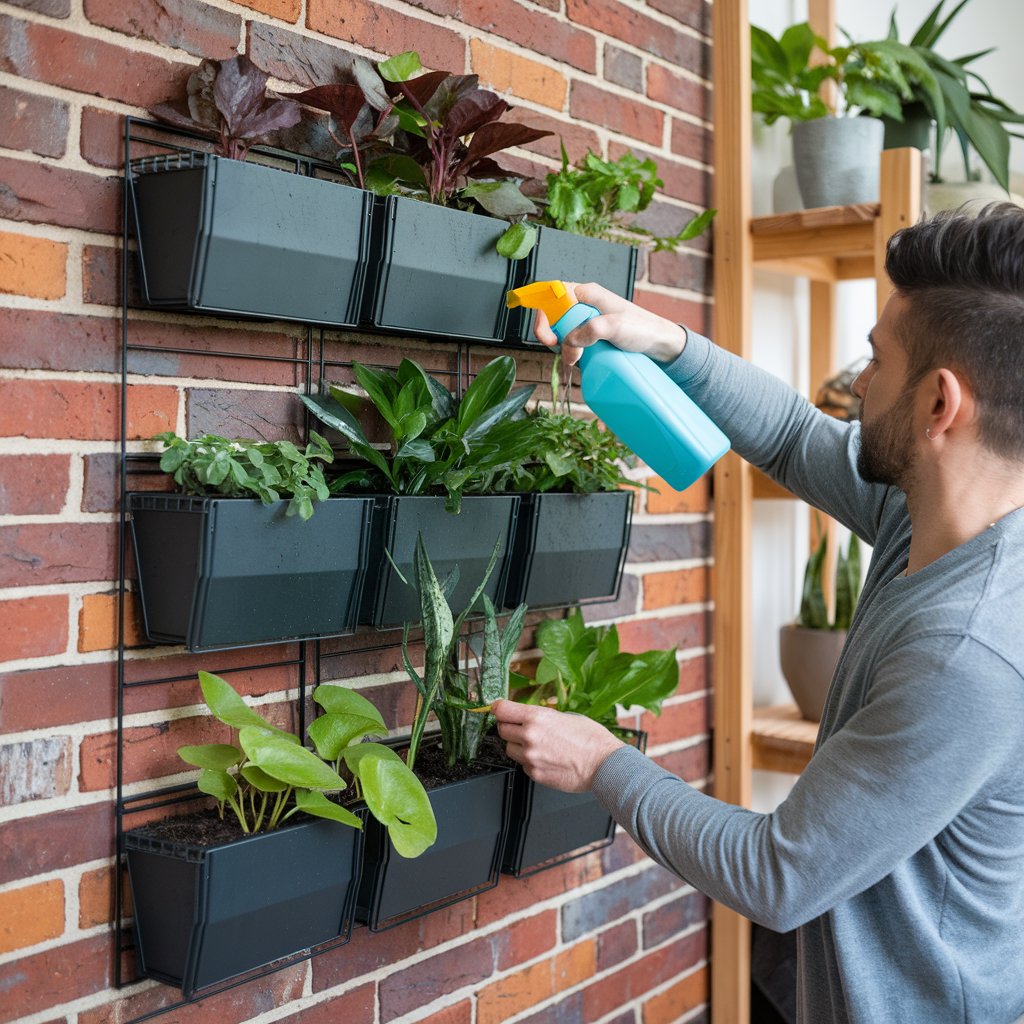
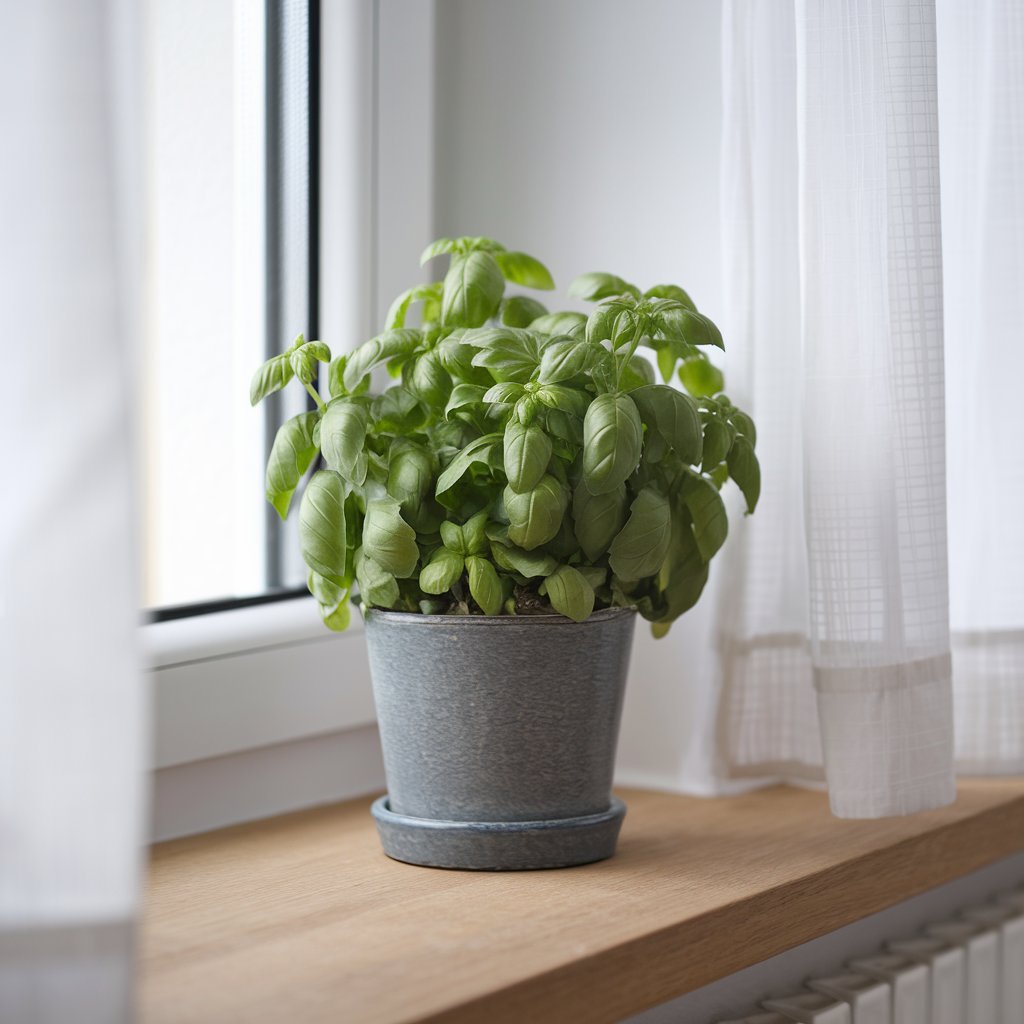
Pingback: Vertical Gardens tips for small spaces - My Garden Vibes